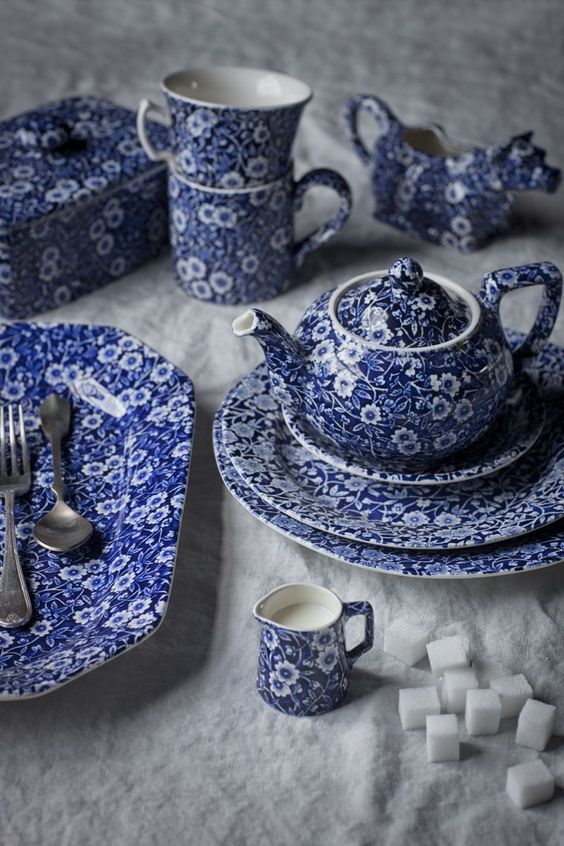Faience versus Transferware
design dictionary-faience plates collection
A dear reader asked me to distinguish between faience pottery and transferware.
It is my pleasure. I love dishes and all things tabletop. The room I miss the most in my former house in the suburbs is one of the tiniest--my butler's pantry, i.e. the dish room. Sigh. No room for that in my NYC apartment, and the Montauk kitchen is itsy bitsy. I already keep the dishes I use daily in Montauk in the hall linen closet.
What's the difference between faience and transferware?
The key difference between faience and transferware is how they are decorated. Faience is hand painted. Transferware, on the other hand, is decorated using a printing process.
FAIENCE
design dictionary -faience and books
Faience is a type of earthenware with a tin glaze popular throughout Europe. The name likely derives from "Faenza," a town in northern Italy. The earthenware starts out with a buff or light red color. After it is fired in a kiln, the pottery is dipped into a lead glaze that contains tin oxide. This special glaze gives the pottery a white opaque finish that is suitable for painting and mimics porcelain. Once the glaze is dry, the pottery is painted and then fired again.
Quimper pottery is one of the most popular types of faience and hails from the town of Quimper, in Brittany France.
design dictionary- faience
In Holland and England, faience pottery is known as "Delftware."
"This
design dictionary- delftware clock
design dictionary- faience-delft tiles
Back in the 15th century, faience made in Italy and Spain was called "majolica' or "maiolica." Both names are mispronounced versions of "Maiorica", the island of Majorca, in Spain.
Pharmacy jar from 15th century Florence
design dictionary- Faience_Plate_Traditional
design dictionary- majolica
Later, during the 19th century, the English revived a tin-based glazed pottery also called "majolica." This later majolica had colored translucent glazes over low relief decoration.
design dictionary- art nouveau faience jardinere
design dictionary- lusterware
Finally, "lusterware" ceramics, created by painting on a mix of metallic oxides such as gold, silver and copper, stemmed from the tin oxide technique.
Sometimes ancient beads and small objects from Egypt and the Near East are called "faience" but these finely glazed wares are not technically pottery as they do not contain clay.
TRANSFERWARE
design dictionary- transferware tureen
The process for making transferware was developed in England in the mid-18th century near Staffordshire as a more economical alternative to hand painting. It is similar to the process used for making paper engravings. It begins with an engraved copper plate. First, the plate is covered in ink and then the engraved design is transferred to paper. While the paper is still wet, it is pressed (or "transferred") to the pottery body. After that, the pottery is fired to set the design. The process produces a highly detailed design that resembles the engraved prints in old books.
design dictionary-burleigh-tissue transfer
For a closer look at how transferware is made, head over to this post on Burleigh pottery, a type of transferware.
Transferware in a rare yellow color
design dictionary- burleigh pottery
Transferware can be earthenware, ironstone, porcelain or bone china. Some call transferware that has an all over floral pattern, "chintz pottery" or "chintzware."
Vive la difference! I would like to have cupboards full of both.
Dior inspired by delftware
















